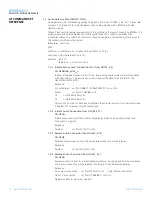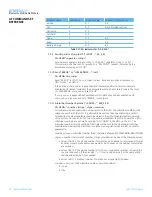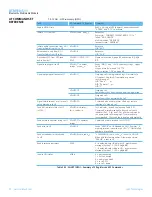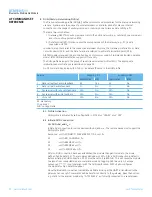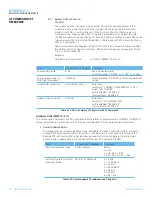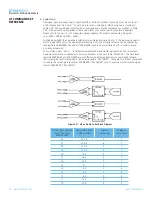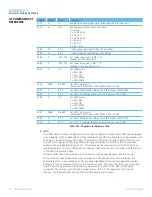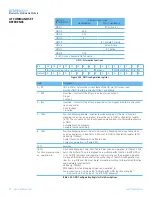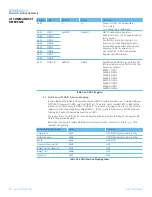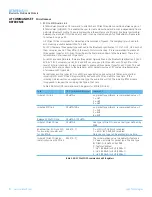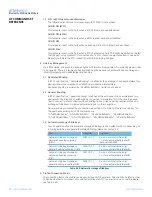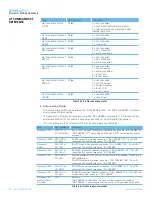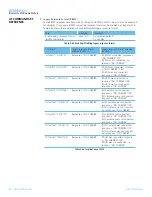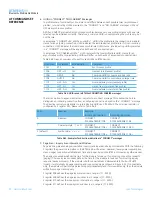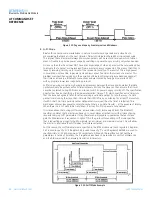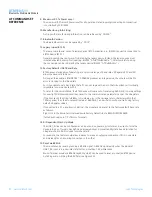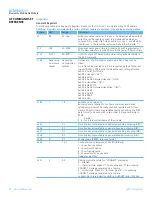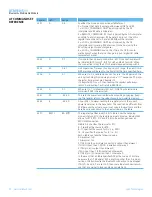
78
www.lairdtech.com
Laird Technologies
BTM510/511
Bluetooth
®
Multimedia Module
Register
Default
Range
Description
S415
0
0..1
Enable Microphone Input Gain, adds extra 24dB to input gain
S419
6
0..6
Set sampling rate for Audio Loopback:
0 = 8 kHz
1 = 11.025 kHz
2 = 16 kHz
3 = 22.050 kHz
4 = 24 kHz
5 = 32 kHz
6 = 44.1 kHz
S589
15
0..22
Codec output gain level (index of gain table)
S590
15
0..22
Codec input gain level (index of gain table)
S689
0
-450..215
Set codec output gain in dBr * 10
(applies to sink), default = 0
S690
0
-450..215
Set codec input gain in dBr * 10
(applies to source), default = 0
S335
0
0..3
Set LED0 mode
0 = LED_OFF
1 = LED_ON
2 = LED_PWM
3 = LED_PULSE
S336
2048
0..4095
Set LED 0 Duty Cycle,
referenced if LED mode = LED_PWM or LED_PULSE
S337
0
0..15
Set LED 0 PWM Period, referenced if LED mode = LED_PWM
S338
5
0..15
Set LED 0 Pulse Rate, referenced if LED mode = LED_PULSE
S340
0
0..3
Set LED1 mode
0 = LED_OFF
1 = LED_ON
2 = LED_PWM
3 = LED_PULSE
S341
2048
0..4095
Set LED 1 Duty Cycle,
referenced if LED mode = LED_PWM or LED_PULSE
S342
0
0..15
Set LED 1 PWM Period, referenced if LED mode = LED_PWM
S343
5
0..15
Set LED 1 Pulse Rate, referenced if LED mode = LED_PULSE
Table 3.43: S Registers for Hardware Units
6. GPIO
On a BTM device a number of digital I/Os can be used for general purposes. Each GPIO will be assigned
to an S-Register (S651 to S663) which will be capable of both GPIO configuration (config mode) as well
as single pin read/write access (r/w mode). The bitmask of the I/O pin for direct read/write access will
be 0x01. All configuration flags are allocated to higher value bits. A bitmask for the I/O pin will be
applied to if new S-Register 650 is set to 1. This will enable the user to access a GPIO-Pin directly by
reading/writing 0 or 1. If the GPIO shall be configured, S650 must be set to 0 in order to obtain access
to the GPIO configuration flags.
All logical GPIO lines can be read/written in one atomic step by new S-Register 670 at any time.
Some GPIOs can have an alternative function assigned. If the alternative function is enabled, the
appropriate I/O Pin is not available as GPIO any more. Handshaking functions are generally enabled
per default. Wi-Fi coexistence functions are currently not used. But if they should be used or required
in the future, the appropriate function cannot be moved to another I/O Pin. Hence it should be
considered that no other user function is assigned to an I/O Pin if the coexistence functions are
required. The following table lists all GPIOs and their alternative functions.
AT COMMAND SET
REFERENCE




